We pass signs warning against swimming and wading in the lake. For good reason. The waters here are high in dissolved arsenic and heavy metals. In short, the lake is toxic. If you’ve read much about clean water and conservation, this might seem a depressingly familiar scenario.
But this is not a story about pollution. It’s a story about protection.
I’m at Borax Lake in southeastern Oregon with Garth Fuller, Eastern Oregon conservation director for The Nature Conservancy. This lake is fed almost exclusively by geothermal hot springs. This in itself is not unusual in this part of the country. There are many hot springs, and not all of them are safe for swimming.
What is unusual is this: We’re walking around the lake searching for a fish.
I’ve spent an inordinate amount of time seeking, watching, catching, thinking about and reading about freshwater fishes. So it’s not a light claim when I say that the Borax Lake chub is the most unusual fish I’ve encountered, and perhaps one of the coolest.
Judged on appearances, it’s not especially notable. It is neither large nor colorful. It’s a pretty standard-issue minnow, only a few inches (at most) in length. But the fish’s habitat is extraordinary in every way, a bubbling, mineral-laden lake that would kill most fish species in minutes.
The Borax Lake chub adapted over the centuries to one of the most inhospitable freshwater environments. Then came more recent, and perhaps even more deadly, human threats.
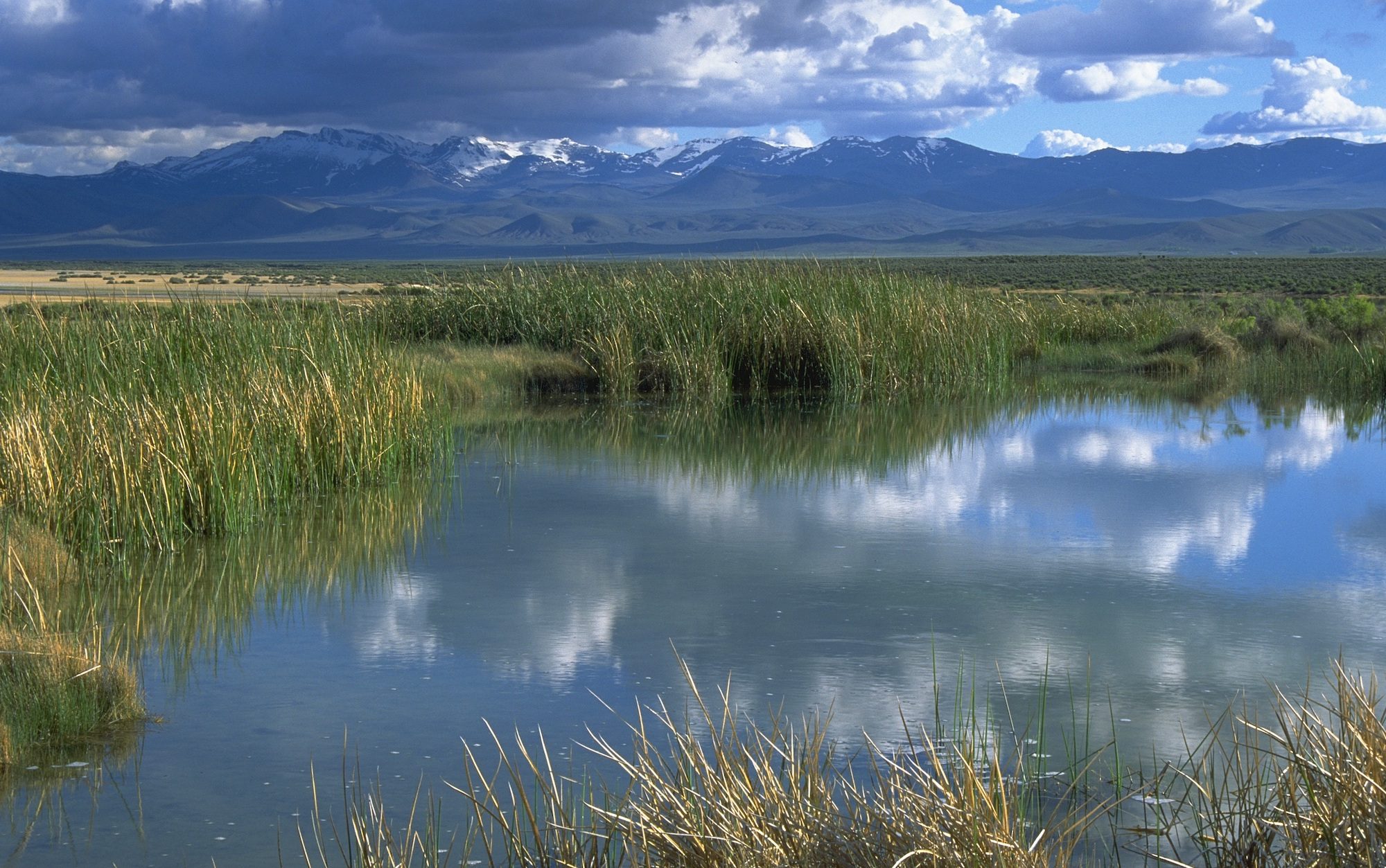
A Surreal Landscape
To a first-time visitor, southeastern Oregon might come as a surprise. This is not the Oregon of rocky coastlines and thick forests. It’s an arid landscape, dominated by sagebrush and ranchland, and one of the most sparsely populated areas of the United States.
I’ve enjoyed exploring this area for years, typically searching for the unique strains of native cutthroat and redband trout that live in isolated desert streams. My trips there involve wide-open spaces, lonely roads and breathtaking vistas. And surprises.
Once, much of this area was covered by a large lake, and you can still find surreal remnants of that today. There’s Lake Abert, an alkaline lake home to brine shrimp. The white, pancake-flat surface of the Alvord Desert – once the lake bed – feels like walking on another planet.
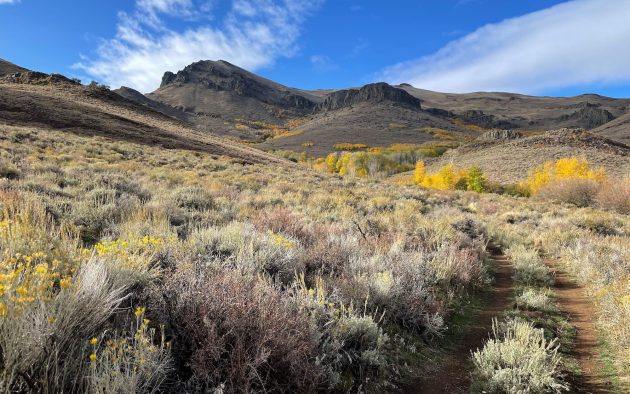
Just to the south is 10-acre Borax Lake. It too was once part of the larger lake. But the water receded, leaving behind a string of some 150 geothermal springs. At the southern end, Borax Lake became isolated, trapping small fish in this tiny basin. They adapted to the hot water (the surface temperature can reach 105 degrees) and evolved into a separate species, the Borax Lake chub.
The entire home range of the chub is the lake. The same is true of a freshwater snail, the Borax Lake rams-horn. The lake also contains one of Oregon’s only stromatolites, “living rock” formed by colonies of cyanobacteria. Walking along the edge, these structures look almost like reefs.
You might suspect a chub that could thrive in the waters of Borax Lake could withstand just about anything. But more recent human activity posed far greater threats.
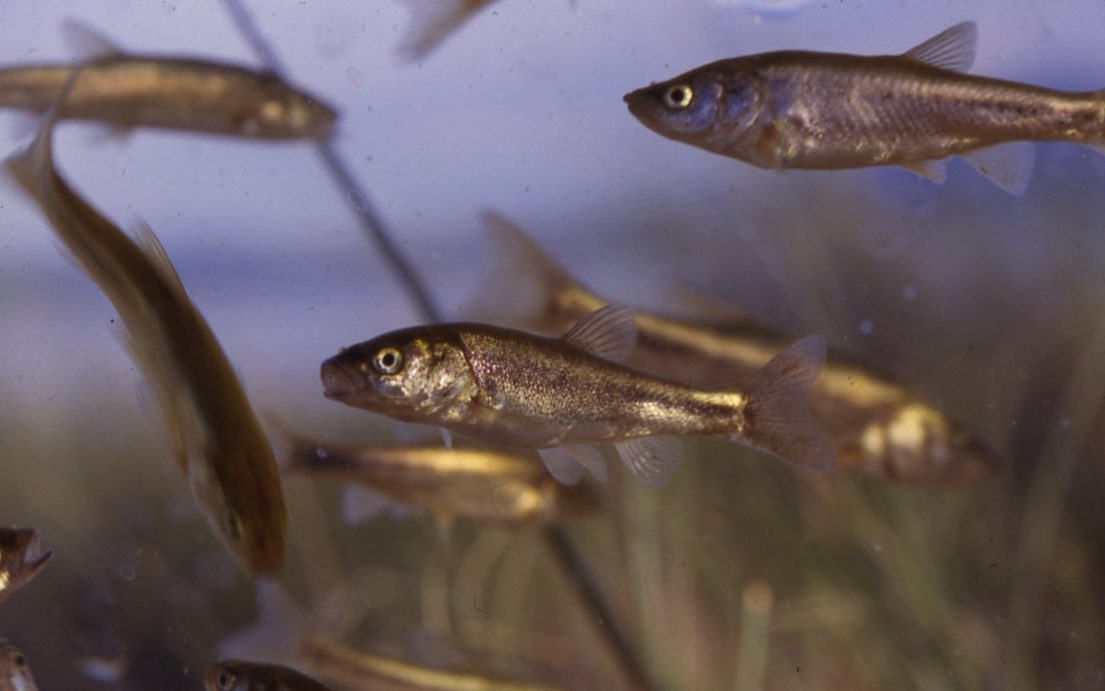
A Fish at Risk
We stare into the water, but the fish prove elusive. Despite the lake’s small size, the fish aren’t evenly distributed. “It can take some searching to find them,” Garth Fuller says. “Sometimes they move out into little side channels, I think related to when the water heats up.
Borax Lake feels very remote, an unbroken vista in every direction. But the lack of nearby cities and developments doesn’t mean a lack of human activity. As we walk around the lake, Fuller points out remnants of the lake’s human history.
There are gouges in the earth, signs of borax mining activity. The company 20 Mule Team Borax (later known as the Rose City Borax Works), operated here. The mule trains did indeed trek across the desert, run by Chinese immigrants…what must have been rough and lonely work. Disturbances around the lake indicate where workers once lived in sod houses, where they dug, where they processed.
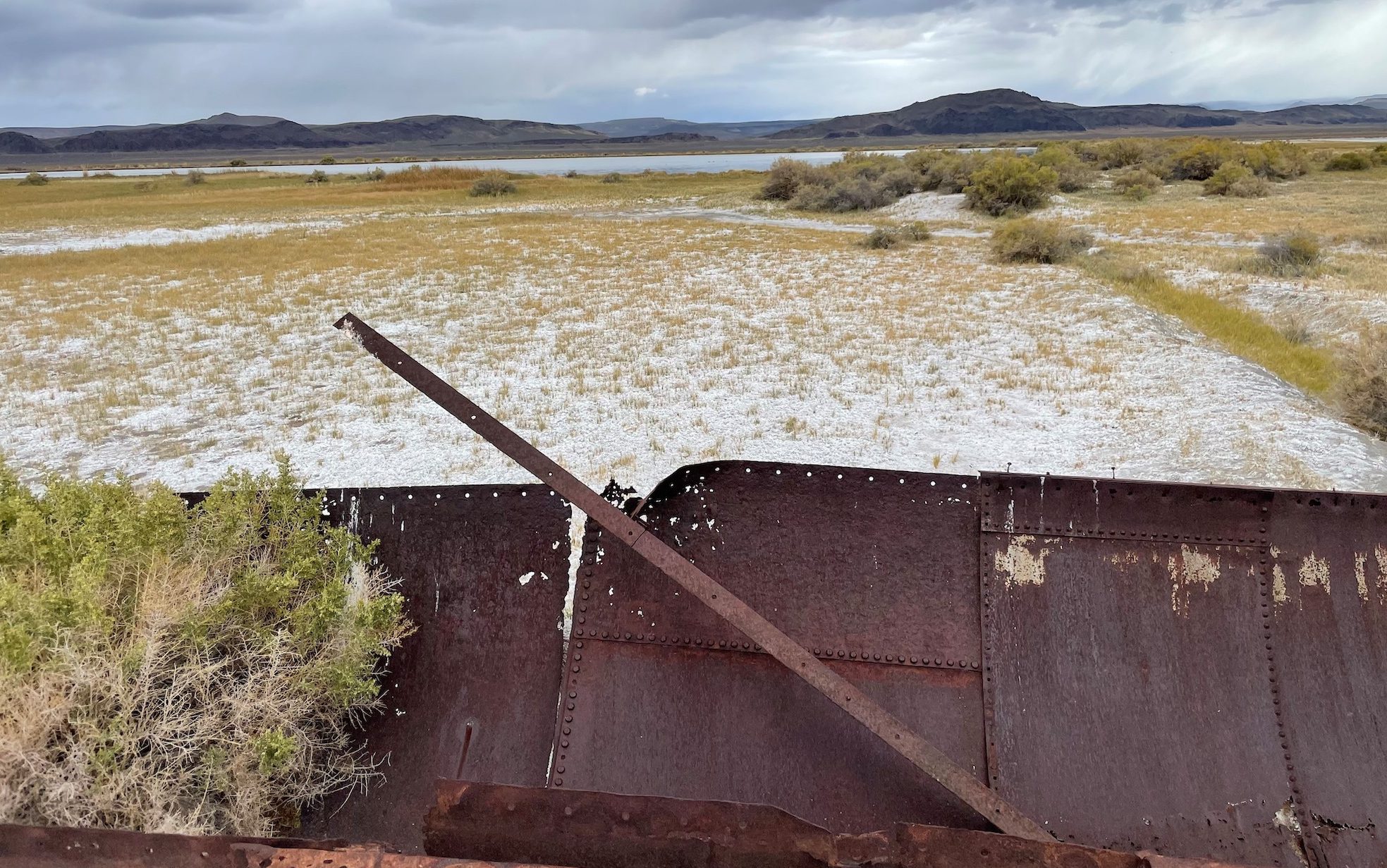
The mining moved on, but human impacts began steadily increasing. The property was private and cattle grazed right up to the lakeshore. “Yeah, they were drinking the arsenic-laced water,” Fuller says.
By the 1980s, recreational activity – including heavy off-road vehicle usage – was increasing in the area. Water was being drawn directly from the lake for irrigation. But the biggest threat to the Borax Lake chub was proposed geothermal development in the area. “Conservationists believed it would be devastating to Borax Lake,” says Fuller.
Conservationists realized there was a lot they didn’t know about the chub and how it interacted with its limited habitat. But the first step was ensuring this private property was protected, which is where The Nature Conservancy (TNC) enters the story.
Staff explored ways to achieve more permanent protection for the property, beginning in 1980. In 1983, TNC leased the lake from the landowners. When the lease expired ten years later, TNC acquired the property, which became the Borax Lake Preserve. But the threat of geothermal development still remained.
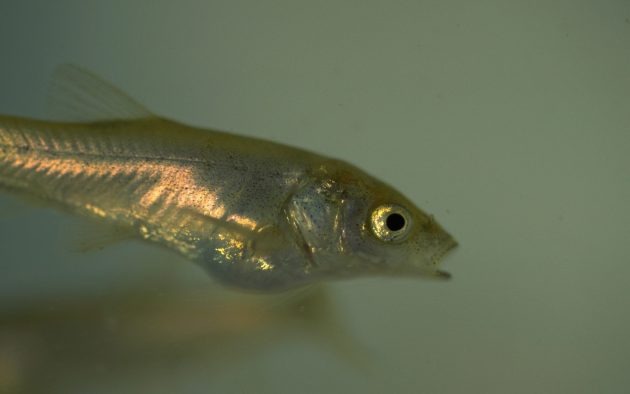
Cold Hands and Wonder Bread
“We knew geothermal development could impact the fish, and we also knew we needed to understand this fish better,” says Cathy MacDonald, who worked in stewardship for the Oregon Chapter at the time.
The chub had been listed as endangered under the Endangered Species Act, but many still feared the impacts of geothermal development.
MacDonald, now Natural Climate Solutions mitigation director for TNC, worked with Oregon Department of Fish and Wildlife, the U.S. Fish and Wildlife Service and other partners to research and monitor the chub. There were studies on its diet; it ate primarily small aquatic invertebrates that lived in the lake.
They also were interested, she says, in the chub’s dispersal. That may seem an unusual study for a fish that is restricted to 10 acres. But, it turns out, the chub moves quite a bit.
“We wanted to understand the dynamics of the population,” Macdonald says. “We were also interested in how the fish could disperse in side channels beyond the lake. When the water temperatures periodically rise, there were die-offs. But many fish moved along the edges and into side channels.”
Geothermal development could cut off these mini-refuges, and pose other dangers.
The monitoring work itself was an adventure in itself. “Honestly, it was a highlight of the year,” says Dan Salzer, a TNC-Oregon staffer who is now the organization’s director of sustainability. “A lot of staff and volunteers would come along. We’d do it in the winter so it was cold. Your hands would freeze in the outside air. But you could always stick them back in the water to warm up.”
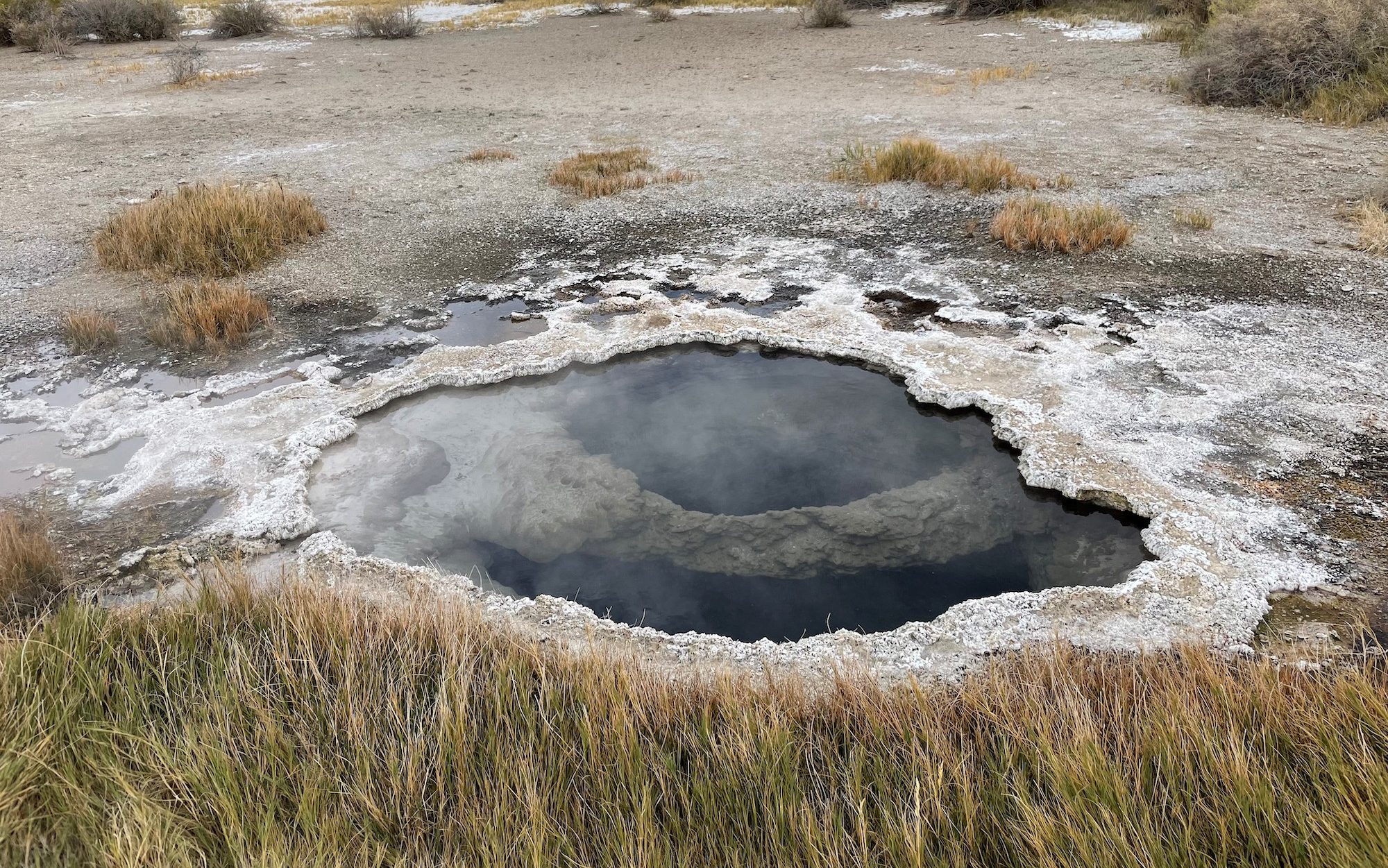
The researchers would bait minnow traps with Wonder Bread, then check traps twice a day. It was a simple “mark-recapture” study, where researchers would mark the fish with a clipped fin. They would then monitor what percentage of previously trapped fish are recaptured, from which researchers can make population estimates.
“The acquisition of this property gave us a seat at the table to be able to influence decisions the federal government was making about geothermal development,” says Macdonald. “Land protection allowed us to advocate for federal lands in the area.”
The work paid off. In 2000, the Steens Mountain Cooperative Management and Protection Act – a federal act addressing conservation in southeastern Oregon – places significant restrictions on geothermal development in the area.
The continued protection offered by Borax Lake Preserve, habitat restoration on adjacent Bureau of Land Management lands, and the legislation shaped a positive future for the chub. In 2018 the US Fish and Wildlife Service, the BLM, and Oregon Department of Fish and Wildlife signed a formal agreement to continue to cooperate with TNC to monitor fish populations and manage the lake habitats.
In 2020, the Borax Lake chub was delisted from the Endangered Species Act. It was a conservation success. But what does the future hold for this little fish?
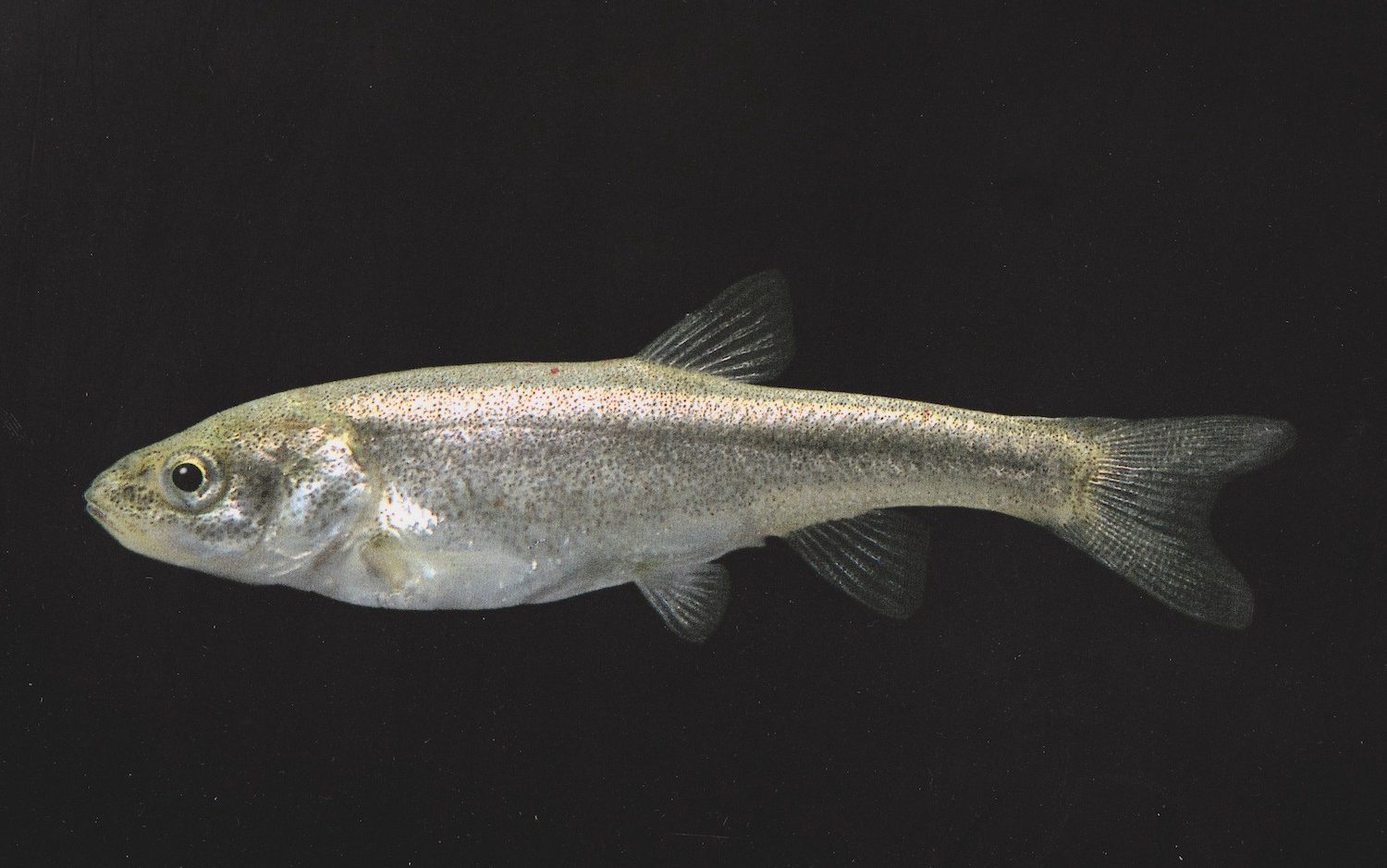
Not Out of Hot Water
Population surveys continue post-delisting, and the most recent estimated more than 80,000 fish in the lake. As Fuller and I continue to make our way around the perimeter, we’re not finding any of them. As if to underscore the point about the chub’s habit of dispersing, Fuller suggests we check out some side channels.
It can feel a bit like finding the proverbial needle in a haystack. But still, this isn’t a large lake. “The fish are isolated,” says Fuller. “So we are well aware threats remain.”
Dan Salzer agrees. “This is a hardy fish, no doubt about it,” he says. “It tolerated years of abuse. But this recovery is not like, say, the bald eagle. You can find bald eagles coast to coast. This fish is in this one small, fragile, unique ecosystem. To some extent, the Borax Lake chub will always be under threat just because it’s restricted to this one place.”
Still, it’s difficult not to be hopeful given the commitment Borax Lake inspires in conservationists. Fuller, Macdonald and Salzer combined have more than 100 years experience working for TNC. They have influenced conservation efforts including large-scale land protection, state and federal policy, climate mitigation and sustainability. But all still see a value in direct land protection.
“The organization has evolved since we began working at Borax Lake,” says Salzer. “But that doesn’t take away from the value of a place like Borax Lake. Not all important conservation is large scale. There are small special places. What we learn from places like Borax Lake has influenced many other conservation projects.”
This includes a recent partnership with the Oregon Desert Land Trust to protect the adjacent Trout Creek Ranch, a 16,000-acre property with grazing permits on 500,000 acres of public land. Owning the property also helped build collaborative efforts, an approach TNC still employs.
“From the start, TNC’s work at Borax Lake was managing many different relationships with diverse viewpoints and values,” says Salzer. “That remains a foundation of our conservation approach, at whatever scale we work.”
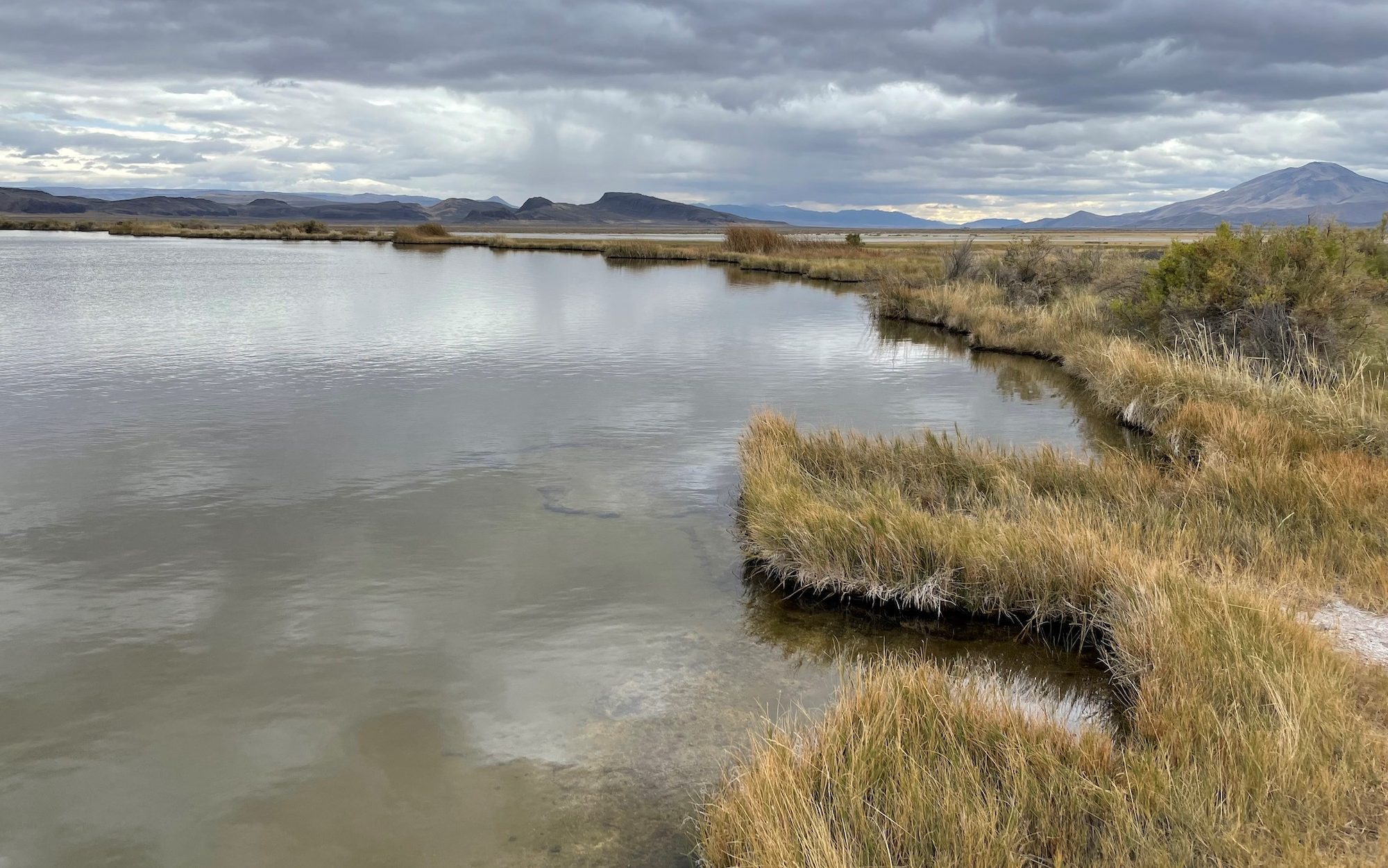
The Elusive Chub
The afternoon wind picks up on the Oregon desert, creating ripples across the lake. It’s difficult to see beneath the surface, making me wonder if we’ll actually spot the chub. Still, I’m enjoying exploring another corner of southeastern Oregon, one of my favorite places. As if sensing my thoughts, Fuller breaks the silence.
“I loved this area the first time I came out here, so different than anything you would expect,” he says. “And I still appreciate every chance I can to get out here.”
We get to the side channel and start slowly walking along it. There. A ripple. Not one caused by wind, but by a fish. I crouch down, and there they are. Borax Lake chubs. Dozens, maybe more. Little minnows darting about.
But I see more than minnows. I see survivors, a component of one of the more unusual habitats. Fuller is joining me, watching the fish dart around at our feet. “Conservation is never really complete; it’s always ongoing,” he says. “But seeing these fish, knowing what could have happened, you have to recognize the successes and what it took to get to this point. A lot of people have been dedicated to making sure the Borax Lake chub will continue to live here in this little oasis.”




A delightful piece. It’s always interesting to read about conservation efforts.
Such an interesting article about a region I know nothing about. I hope that one day I see this fish up close in person.